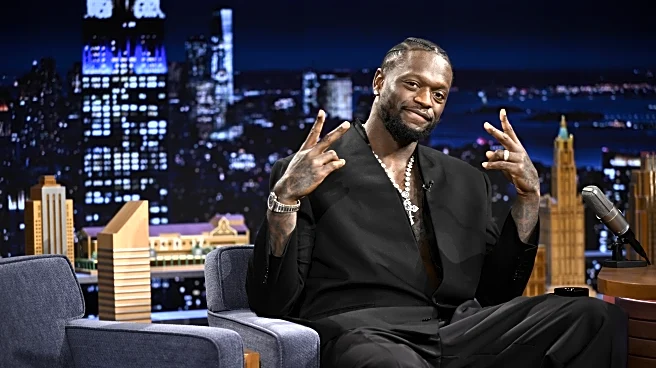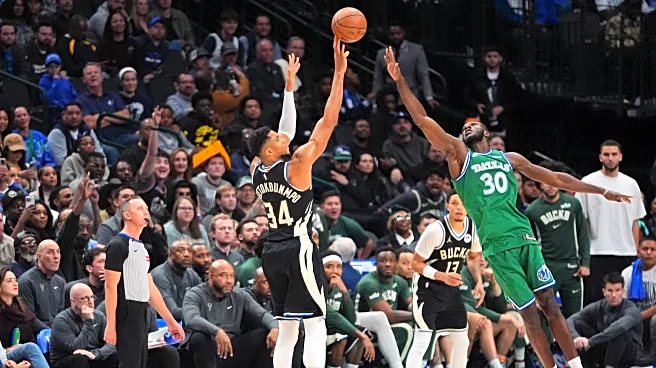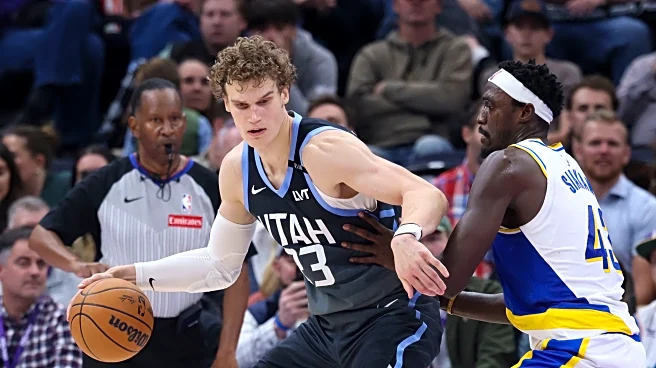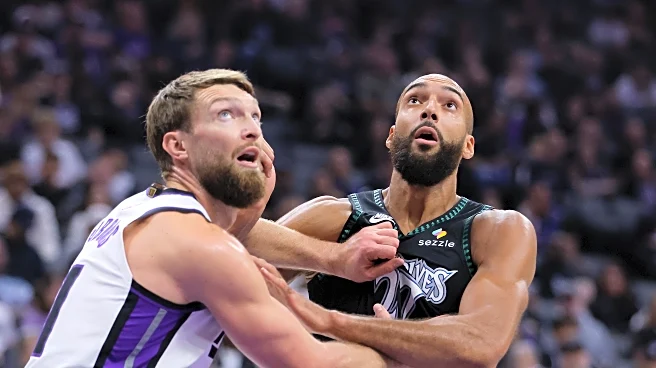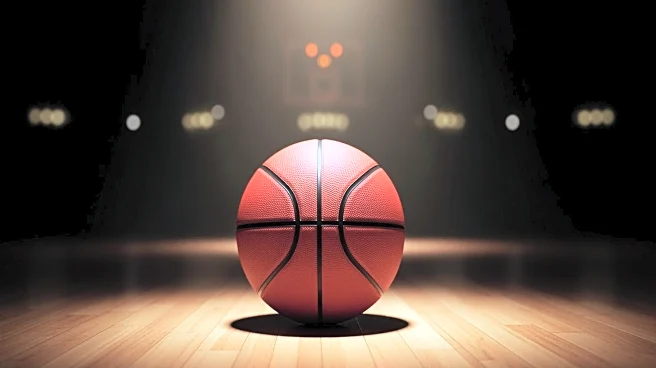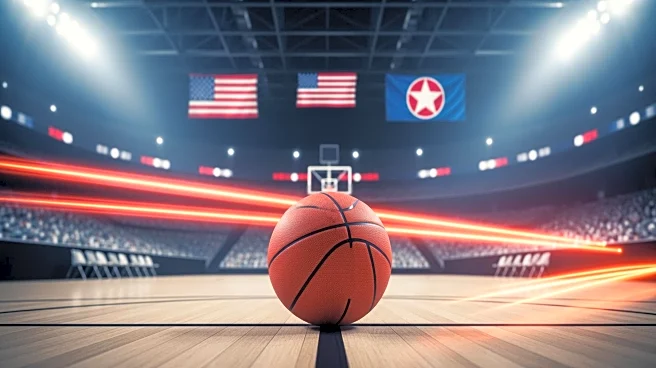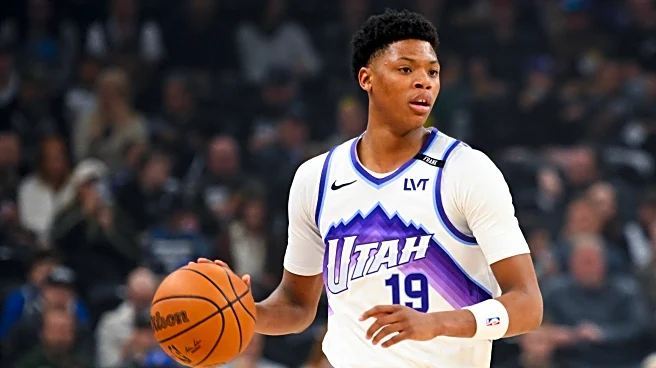It has been a complicated start to the season for the Minnesota Timberwolves. Right before the start of the season, Donte DiVincenzo was moved into the starting lineup for Mike Conley, Anthony Edwards missed five games with a hamstring strain, and the defense has been incredibly inconsistent, especially in the minutes when Rudy Gobert is on the bench.
Through it all, the Wolves have put up a respectable 7-4 record, including wins in five of their last six games. The Wolves’ recent success has been
driven by the effectiveness of their offense. Through 11 games, the Timberwolves have the fourth-best offensive rating, trailing only the Houston Rockets, Denver Nuggets, and New York Knicks.
Possibly the biggest reason for the Wolves’ success on offense, along with a surge from Jaden McDaniels, has been the stellar play of Julius Randle, who is playing the basketball of his career. The Wolves forward is averaging 25.4 points and 6.2 assists per game with an effective field goal percentage of 60.1, all of which would be career-highs.
The area of Randle’s game that has caused the explosion in both counting stats and efficiency has been his effectiveness in isolation. According to Synergy Sports, Randle leads the NBA in points per possession on ISO plays (minimum four ISOs per game), with the Wolves scoring an eye-popping 1.37 points per play on Randle isolation possessions.
Julius’s unique combination of strength, speed, and shooting touch makes him incredibly difficult to defend in a one-on-one isolation situation. There just are not many defenders in the NBA who have enough size, weight, and quickness to guard all facets of Randle’s game.
If the defense uses a larger defender, like Domantas Sabonis or Kyle Filipowski, Randle has been able to use his speed to create separation both in the midrange and going to the rim.
If the defense brings a smaller defender, like the Charlotte Hornets did with Tre Mann, Julius can easily use his size and strength advantage to force his way to the rim.
Even when a team does have a competent defender to put on Randle, the Wolves can deploy some easy actions to get a different player to guard Julius. Below, Randle sets a simple screen to get his matchup, Lauri Markkanen, off of him in favor of the much smaller Keyonte George, who he takes right to the rim for the and-1 layup.
Since Edwards is such a deadly offensive player, it puts the other team in a very difficult situation of deciding between dropping their big man into the paint to focus on Randle, which gives Edwards an easy walk-up 3-pointer, or switching, which, as seen in the following play, did not end up working out.
The simplest solution for opposing defenses would be to send an extra defender at Randle. The idea would be that the double-team would get the ball into someone else’s hands, have the defense rotate behind the play, and force a shot from someone who is far less efficient.
The problem with that strategy is that Randle has been fantastic this season at making the right play and doing so quickly so that the defense has little time to respond.
DiVincenzo has been a near-perfect partner for Randle’s isolation possessions. His lights-out shooting and quick trigger mean he only needs a shred a daylight to get off a good look from beyond the arc. All it takes is for a defender to take one extra step toward Julius, and it leads to a good look for Donte.
Randle’s isolation prowess has been especially valuable in crunch time. Last season, the Wolves were one of the worst-performing teams late in close games. It was a focus of both the offseason and training camp for the Timberwolves to find another option down the stretch of games so that the burden does not fall solely on Edwards.
Multiple times already this season, Julius has used an isolation possession to find a go-ahead shot for either himself or a teammate late in a close game.
The isolation possession from Randle, along with Edwards, has given the Timberwolves some of the best isolation numbers in the NBA. They rank fourth in both isolation volume and efficiency, with no team outpacing them in both of those categories.
An understandable worry with being a high-volume isolation team would be that the offense slows down, and the ball movement that Timberwolves coach Chris Finch preaches goes away. Finch spoke after practice this week about how not all isolations are created equal, and that finding the balance between the flow offense and efficient isolation possession will be something to monitor all season long.
“They’re not all the same. Some some games we’ve played, the Portland game was one, and I thought the Utah game was another. The game just kind of boiled down to that, because of either switching or heavy pressure. So we leaned into it. We got two good ISO players, but I thought those ISOs were in the context of the game for the most part. We’ve had some periods to play, maybe in the second half of the Knicks game, where ISOs were out of the context. So generally, I’ve been really happy with the offense, the way it looks, the movement, everybody’s getting involved, so I just have to watch more whether it leads to a bad shot or not.”
While the Wolves’ defense has begun to play better, albeit against lackluster opponents, it appears that Minnesota’s path to being a championship-contending team will be through its offense.
Randle and his ISO game have emerged as one of the staples of the Timberwolves’ offense. Especially in the games Ant missed, Julius was the driving force of the Minnesota offense, one that will likely continue to perform at a top-five level if the team wants to achieve its loftiest of goals.
Randle has made sizeable positive strides in his game before, as he won Most Improved Player during the 2020-21 season en route to his first All-Star and All-NBA selection. This season, Randle seems poised to take another leap, using his bully-ball to give the Wolves the secondary creator next to Edwards they’ve craved for multiple seasons.
It’s been goosebumps every time.
